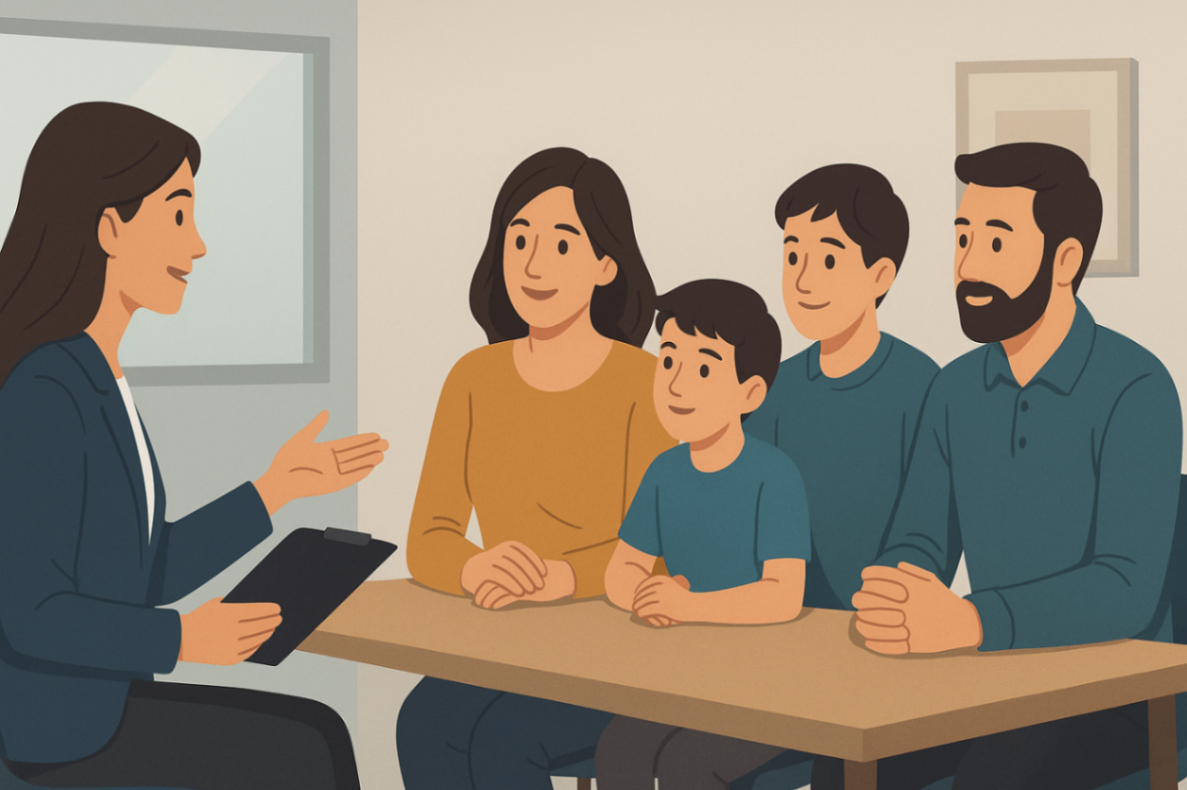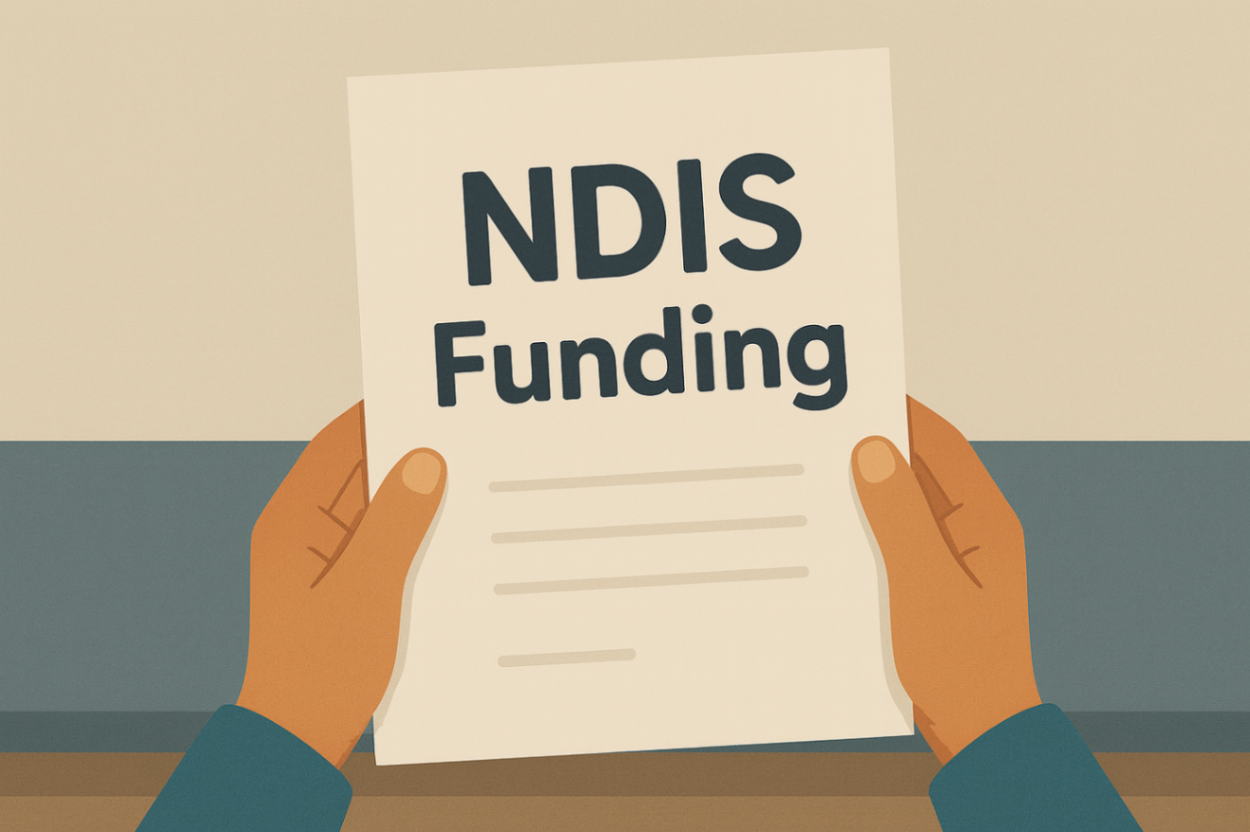
ndis funding for autism eligibility: what parents need to know in 2025
11 July, 2025

Key Highlights
-
Comprehensive Overview of NDIS funding for autism in children and teens, focusing on challenges including repetitive behaviours.
-
Clear Eligibility: Step-by-step on NDIS autism eligibility and ASD levels
-
Practical Steps: How to apply NDIS autism funding, prepare your evidence, and navigate planning meetings
-
Maximisation Tips: Strategies to build a future-proof NDIS plan with local providers
-
Local Focus: Liverpool & Canterbury Service Centres, registered therapists, and support coordinators
Introduction
For many families, understanding NDIS funding for autism eligibility is the first step toward unlocking life-changing supports for their child. The National Disability Insurance Scheme (NDIS) provides funding to help children on the autism spectrum access therapies, build communication skills, and develop independence. This guide explains how NDIS autism eligibility is assessed, what types of supports are funded, and how daar’s team helps families secure the right plan for their child’s needs in 2025.
What Is NDIS Funding for Autism?

The NDIS offers tailored funding for individuals diagnosed with autism to access supports that improve daily living, learning, and social participation.
Funding typically covers therapies and services such as:
-
Behaviour support to manage challenging behaviours and promote emotional regulation
-
Speech therapy to develop communication skills
-
Occupational therapy to support sensory, motor, and self-care abilities
-
Psychology to build coping skills and mental wellbeing
-
Parent coaching and early-intervention programs
Each child’s NDIS plan is unique, based on their functional needs, goals, and level of support required — not just their diagnosis.
If you’d like to get up to speed on the fundamentals of the scheme itself, start with our Understanding NDIS for Autism overview.
What is the National Disability Insurance Scheme (NDIS)?
The National Disability Insurance Scheme (NDIS) is Australia’s government-funded plan that helps individuals with disability live fuller lives and increase economic participation, managed by the National Disability Insurance Agency. It allocates funding based on assessed need rather than a one-size-fits-all approach. By focusing on goals and functional capacity, the NDIS ensures your child receives the right supports—from therapy sessions to assistive technology.
How Autism Spectrum Disorder (ASD) is Supported by the NDIS
Under the NDIS, supports for Autism Spectrum Disorder include: • Core Supports: daily living assistance and social-skills programs provided by NDIS providers • Capacity-Building: speech therapy, occupational therapy, psychology • Assistive Technology: communication devices and sensory tools.
Understanding Autism Eligibility for the NDIS
To be eligible for NDIS funding, your child must:
-
Have a formal diagnosis of Autism Spectrum Disorder (ASD) from a qualified professional (paediatrician, psychologist, or psychiatrist).
-
Show how autism affects their daily functioning, such as communication, learning, social interaction, or behaviour.
-
Be under 65 years of age and live in an area where the NDIS operates.
Tip: Eligibility isn’t automatic — it’s based on how autism impacts everyday life. Comprehensive evidence makes your application stronger.
For younger children, the Early Childhood Approach (ECA) can provide support before a full diagnosis, focusing on early intervention and family capacity building.
Eligibility Criteria for NDIS Funding for Autism
To get NDIS funding, you have to meet some rules. You need to give proof of your ASD diagnosis. You also have to show evidence of the impact autism affects everyday activities like the way you talk, join in, take care of yourself, and learn. This is called showing your level of functional capacity.
Your age matters too for an NDIS participant. NDIS support is only for people between 7 and 65 years old, and meeting the NDIS eligibility criteria is essential. You have to live in Australia, and your stay must match the citizenship or visa rules. If you meet these steps, having a permanent impairment or autism diagnosis can help you get good NDIS support. This help can make your everyday life better.
NDIS autism funding eligibility requires:
-
Have a formal autism diagnosis from a qualified practitioner.
-
Be under 65 years of age when you first apply.
-
Demonstrate that your disability causes “substantial functional impairment” in daily life.
-
Live in Australia and hold the correct residency status.
Be prepared to submit supporting evidence (reports, assessments) at your planning meeting.
Understanding ASD Levels and Their Role in Eligibility
The Diagnostic and Statistical Manual, 5th Edition (DSM-5), puts Autism Spectrum Disorder into three levels. These levels are important because they help decide if someone gets ndis funding.
Level 1 is when people need mild support. To fit this level, you often have to show more proof that daily activities, like social interaction in social settings or self-care, are hard for you. Level 2 is for people who need substantial support. There are big problems with talking and behaviour, so those people usually get fast help through things like List A.
Level 3 is for people who need very substantial support. People at this asd level have serious trouble each day. That makes it easier to get ndis funding right away. Each level tells about a person’s functional capacity. This helps make the application go in a way that matches their individual needs with the right support for their daily activities.
NDIS Funding for Autism Level 1
When an NDIS plan categorises support at Level 1, it’s designed for participants with relatively lower support needs who nonetheless benefit from targeted assistance. Typical funded supports at this level include:
-
Capacity‑Building Supports
– Early childhood intervention
– Basic therapy sessions (e.g. speech pathology, occupational therapy) -
Core Supports
– Short‑term funding for everyday activities (e.g. transport to therapy, social skills groups) -
Assistive Technology
– Low‑cost items such as communication aids and sensory tools
Estimated annual budget: Participants with Level 1 needs often receive between $8,000–$12,000 per year, depending on goals and chosen providers.
-
Be specific in your goal statements (e.g. “Attend a weekly speech group,” rather than “improve communication”).
-
Gather supporting evidence from your pediatrician or therapist to justify early intervention.
-
Schedule a plan review every 6–12 months to adjust funding as needs evolve.
NDIS Funding for Autism Level 2
For children whose autism support needs are more moderate, Level 2 funding delivers deeper, more frequent interventions:
-
Intensive Capacity‑Building
– Weekly to fortnightly therapy sessions (speech, occupational, behavioural)
– Group programs for social and emotional regulation -
Expanded Core Supports
– Transport and respite linked to schooling or therapy visits
– Assistance with community participation (e.g. sports, art therapy) -
Customized Assistive Technology & Home Modifications
– Sensory rooms, specialised seating, advanced communication devices
Estimated annual budget: Level 2 plans commonly range from $20,000–$35,000 per year, depending on session frequency and service complexity.
-
Map your support network—list existing therapists and programs to demonstrate continuity of care.
-
Detail session frequency in your application (e.g. “3 speech therapy sessions per week”).
-
Link to our Autism Support Plan Guide for stronger justification.
Meeting the NDIS Access Requirements for Autism
Getting NDIS funding for autism begins when you fill out an Access Request Form. You can find this form online or get it by calling the NDIS agency. You must have proof that shows how the disability affects daily life. This proof is needed to support your application.
Health professionals take the lead in helping with the NDIS process. They confirm an ASD diagnosis and provide documents to show you are eligible. For example, an occupational therapist or a speech therapist can offer strong evidence that shows the impact of your disability on communication problems and daily activities.
- Collect diagnostic evidence from trusted health professionals.
- Fill out the Access Request Form and include all needed paperwork.
- Use professional reports to point out limits in functional capacity that affect your daily life.
This is the way to help make sure people get NDIS funding that matches what they need.
How much funding does NDIS give for autism?
 Your total NDIS budget depends on your assessed support needs. After your planning meeting, you’ll receive core supports and capacity‑building funds tailored to your goals. Typical starting budgets range from $10,000–$15,000 per year, with adjustments at each plan review.
Your total NDIS budget depends on your assessed support needs. After your planning meeting, you’ll receive core supports and capacity‑building funds tailored to your goals. Typical starting budgets range from $10,000–$15,000 per year, with adjustments at each plan review.
Beginner’s Guide: Getting Started with NDIS Funding for Autism
Starting your journey with autism NDIS funding begins with getting ready. If you are applying for a child under nine, you will go through the Early Childhood Early Intervention (ECEI) Approach. For older people, the process is a bit different. In both cases, you need to make sure your evidence meets NDIS requirements.
Local area coordinators and early childhood partners can help you with your application. They have the know-how to guide you through any problems that come up. Their help makes things easier and helps your NDIS funding plan fit your support needs and goals for autism. When you’re ready to map funding to a concrete support plan, explore the NDIS Autism Support Plan Guide for practical templates and tips.
What You Need to Begin Your NDIS Journey
Getting started with the NDIS means you need to collect key documents for your application. These include:
-
An autism diagnosis from a licensed health professional.
-
Evidence that explains how autism affects the person's functional capacity.
-
Reports from speech therapists or occupational therapists. These will show the daily struggles that come up.
-
Data that shows if there are problems with social interaction or learning.
If your child is younger than nine years old, an early childhood partner will help guide you. They will explain how to get access to needed therapies and supports. For adults or older children, a local area coordinator will work with you to make sure your application meets NDIS rules.
Step-by-Step Guide to Accessing NDIS Funding
The steps to get NDIS funding can be made simple if you break them down:
-
Obtain a diagnosis: You need to see a GP. The doctor will do checks to see if you have ASD.
-
Complete an Access Request: You have to fill out a form from the NDIS. Attach the proof you need to show.
-
Prepare for your planning meeting: Get your documents ready. These need to show your functional capacity and what necessary supports you need.
-
Set goals: Write down what you want to do. This will help decide how funding is given. Goals can be for things like getting therapy or to work on social skills.
-
Review your plan: Check everything in your plan. Make sure the funding helps with what you need.
Taking these steps can help you get ready and boost your chances for NDIS funding approval.
For insights into creating fully personalised plans that deliver real outcomes, dive into Individualised NDIS for Autism Plans: A Guide to Real Outcomes.
Next steps
If you’re unsure where to start with NDIS funding for autism, our team is here to help. Book your NDIS planning session with our specialists today. We’ll help you gather the right evidence, set clear goals, and maximise your funding for autism supports.
Frequently Asked Questions
How much does NDIS cover for autism?
On average, ndis funding gives $16,700 each year for children who are under seven years old. For people who are seven years old and older, ndis funding is $32,800 every year. This money is for core and capacity-building supports. The supports are made for what people with autism need and want in day-to-day life.
What is NDIS autism eligibility?
To get autism support from the NDIS, you need to meet several requirements related to ndis eligibility. You must show a reduced functional capacity, have a confirmed autism diagnosis, and meet citizenship or residency rules. It is important for applicants to explain how their disability affects their daily activities. This is needed under the NDIS legislation.
Are autism assessments covered by NDIS?
NDIS does not usually pay for autism checks. But, health professionals like psychologists or speech therapists can help show if someone is eligible. Early intervention services that help with autism may be part of some approved plans.
.svg)












